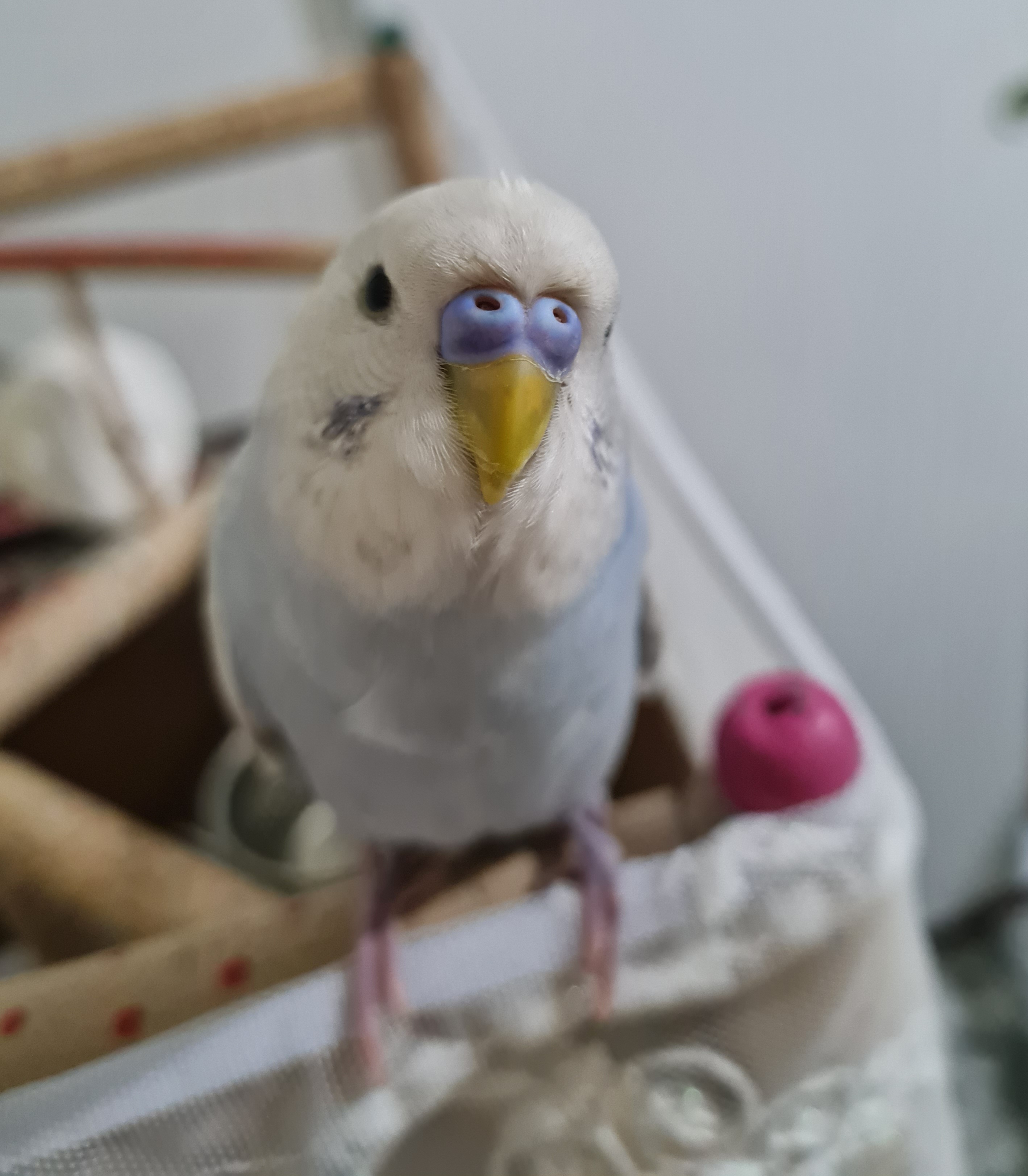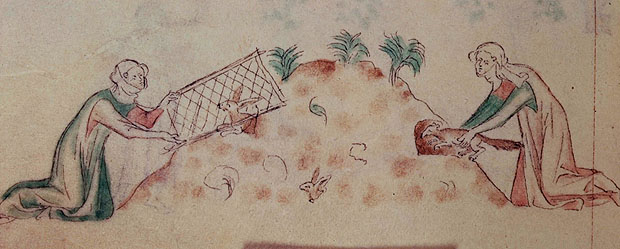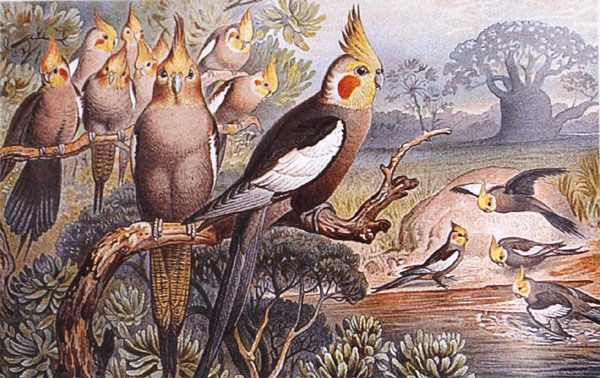|
Birdland Animal Park
Birdland Animal Park is a wildlife park located on the South Coast of New South Wales, Australia. The wildlife park is situated in a natural bushland setting adjoining Joes Creek, and the park's facilities include an orphanage for rescued animals, up-close interaction with wombats and diamond pythons, walkthrough kangaroo areas and miniature train rides. List of animals * Agile wallaby * Alexandrine parrot * Alpaca * Australian green tree frog * Australian king parrot * Australian pelican * Australian boobook owl * Barbary dove * Bare-nosed wombat * Black swan * Blue peafowl * Budgerigar * Bush stone curlew * Chestnut-eared finch * Chukar partridge * Cockatiel * Common bronzewing * Cunningham's spiny-tailed skink * Diamond python * Domestic goat * Domestic rabbit * Eastern bearded dragon * Eastern blue-tongued lizard * Eastern grey kangaroo * Eastern long-necked turtle * Eastern short-necked turtle * Eclectus parrot * Emu * European fallow deer * Freshwat ... [...More Info...] [...Related Items...] OR: [Wikipedia] [Google] [Baidu] |
Batemans Bay
Batemans Bay is a town on the South Coast region of the state of New South Wales, Australia. Batemans Bay is administered by the Eurobodalla Shire council. The town is situated on the shores of an estuary formed where the Clyde River meets the southern Pacific Ocean. Batemans Bay is located on the Princes Highway (Highway 1) about from Sydney and from Melbourne. Canberra is located about to the west of Batemans Bay, via the Kings Highway. At the 2021 census, Batemans Bay had a population of 17,519. It is the closest seaside town to Canberra, making Batemans Bay a popular holiday destination for residents of Australia's national capital. Geologically, it is situated in the far southern reaches of the Sydney Basin. Batemans Bay is also a popular retiree haven, but has begun to attract young families seeking affordable housing and a relaxed seaside lifestyle. Other local industries include oyster farming, forestry, eco-tourism and retail services. History Indigenous h ... [...More Info...] [...Related Items...] OR: [Wikipedia] [Google] [Baidu] |
Budgerigar
The budgerigar ( ; ''Melopsittacus undulatus''), also known as the common parakeet or shell parakeet, is a small, long-tailed, seed-eating parrot usually nicknamed the budgie ( ), or in American English, the parakeet. Budgies are the only species in the genus ''Melopsittacus''. Naturally, the species is green and yellow with black, scalloped markings on the nape, back, and wings. Budgies are bred in captivity with colouring of blues, whites, yellows, greys, and even with small crests. Juveniles and chicks are monomorphic, while adults are told apart by their cere colouring, and their behaviour. The species is the only member of the genus ''Melopsittacus'', which is the only genus in the Melopsittacini tribe. The origin of the budgerigar's name is unclear. First recorded in 1805, budgerigars are popular pets around the world due to their small size, low cost, and ability to mimic human speech. They are likely the third most popular pet in the world, after the domesticated d ... [...More Info...] [...Related Items...] OR: [Wikipedia] [Google] [Baidu] |
Eastern Long-necked Turtle
The eastern long-necked turtle (''Chelodina longicollis'')Kennett, R., Roe, J., Hodges, K., and Georges, A. 2009. ''Chelodina longicollis'' (Shaw 1784) – eastern long-necked turtle, common long-necked turtle, common snake-necked turtle. ''In'': Rhodin, A.G.J., Pritchard, P.C.H., van Dijk, P.P., Saumure, R.A., Buhlmann, K.A., Iverson, J.B., and Mittermeier, R.A. (Eds.). Conservation Biology of Freshwater Turtles and Tortoises: A Compilation Project of the IUCN/SSC Tortoise and Freshwater Turtle Specialist Group. ''Chelonian Research Monographs'' No. 5, pp. 031.1–031.8, is an east Australian species of snake-necked turtle that inhabits a wide variety of water bodies and is an opportunistic feeder. It is a side-necked turtle ( Pleurodira), meaning that it bends its head sideways into its shell rather than pulling it directly back. Distribution The species is found throughout south eastern Australia where it is found west of Adelaide ( South Australia) eastwards throughout Vic ... [...More Info...] [...Related Items...] OR: [Wikipedia] [Google] [Baidu] |
Eastern Blue-tongued Lizard
The ''Tiliqua scincoides scincoides,'' or eastern blue-tongued lizard, is native to Australia. It is unique due to its blue tongue, which can be used to warn off predators. In addition to flashing its blue tongue, the skink hisses and puffs up its chest to assert dominance and appear bigger when in the presence of its predators such as large snakes and birds. The eastern blue tongue is ovoviviparous and precocial, meaning that its young are more developed and advanced at their time of birth. The ''Tiliqua scincoides scincoides'' is not venomous to humans and can be found in suburban and urban areas, specifically in house gardens. Nomenclature The eastern blue-tongued lizard (''Tiliqua scincoides scincoides'') is a species of skink in the genus Tiliqua. The ''Tiliqua scincoides scincoide''s can also be called the common blue tongue, the eastern bluetongue, the eastern blue-tongued lizard, or skink. The ''Tiliqua scincoides scincoide''s is in the Animalia kingdom, the Chordata ph ... [...More Info...] [...Related Items...] OR: [Wikipedia] [Google] [Baidu] |
Eastern Bearded Dragon
The eastern bearded dragon (''Pogona barbata''), also known as common bearded dragon or simply bearded lizard, is an agamid lizard found in wooded parts of Australia. It is one of a group of species known commonly as bearded dragons. Other common names for this species include Jew lizard and frilly lizard, the latter being a confusion between this and another dragon, the frill-necked lizard (''Chlamydosaurus kingii''). This species was originally described in 1829 by Georges Cuvier, who named it ''Amphibolurus barbatus''. Description ''P. barbata'' is one of the eight recognized species within the genus ''Pogona''. Adult males can grow to about from the snout to the tip of the tail, while females may reach in overall length. The head is large and triangular in shape. The throat is covered with spiny, dark grey scales which can be raised to form an impressive "beard". Several groups of even longer spiny scales are located at the back of the head, the corners of the mouth, the ext ... [...More Info...] [...Related Items...] OR: [Wikipedia] [Google] [Baidu] |
Domestic Rabbit
A domestic or domesticated rabbit (''Oryctolagus cuniculus domesticus'')—more commonly known as a pet rabbit, bunny, bun, or bunny rabbit—is a subspecies of European rabbit, a member of the lagomorph family. A male rabbit is known as a ''buck,'' a female is a ''doe,'' and a young rabbit is a ''kit'', or ''kitten''. Rabbits were first used for their food and fur by the Romans, and have been kept as pets in Western nations since the 19th century. Rabbits can be housed in exercise pens, but free roaming without any boundaries in a rabbit-proofed space has become popularized on social media in recent years. Beginning in the 1980s, the idea of the domestic rabbit as a house companion, a so-called ''house rabbit'' similar to a house cat, was promoted. Rabbits can be litter box-trained and taught to come when called, but they require exercise and can damage a house that has not been "rabbit proofed" based on their innate need to chew. Accidental interactions between pet rabbits ... [...More Info...] [...Related Items...] OR: [Wikipedia] [Google] [Baidu] |
Domestic Goat
The goat or domestic goat (''Capra hircus'') is a domesticated species of goat-antelope typically kept as livestock. It was domesticated from the wild goat (''C. aegagrus'') of Southwest Asia and Eastern Europe. The goat is a member of the animal family Bovidae and the tribe Caprini, meaning it is closely related to the sheep. There are over 300 distinct breeds of goat.Hirst, K. Kris"The History of the Domestication of Goats".''About.com''. Accessed August 18, 2008. It is one of the oldest domesticated species of animal, according to archaeological evidence that its earliest domestication occurred in Iran at 10,000 calibrated calendar years ago. Goats have been used for milk, meat, fur, and skins across much of the world. Milk from goats is often turned into goat cheese. Female goats are referred to as ''does'' or ''nannies'', intact males are called ''bucks'' or ''billies'', and juvenile goats of both sexes are called ''kids''. Castrated males are called ''wethers''. Whi ... [...More Info...] [...Related Items...] OR: [Wikipedia] [Google] [Baidu] |
Diamond Python
''Morelia spilota spilota'' is a subspecies of carpet python (''Morelia spilota''), popularly known as the diamond python. It is a medium to large snake, found in coastal areas and adjacent ranges of south-eastern Australia. It is the most southerly occurring python in the world and is found at higher altitudes than any other species of Australian python. Description ''M. s. spilota'' is quite variable in colour and pattern, typically being predominantly dark olive to black in colour with most dorsal scales having a yellow (or cream) spot in the centre (hence ''spilota'', meaning spotted). Along the body and tail are numerous clusters of yellow or cream scales that form "rosettes" that look a bit like diamonds (hence the common name). The underside is white, cream or even yellowish in colour, although it is often spotted with black. The average adult size of this subspecies is usually about in total length (including tail), although it is known to reach a total length of about ... [...More Info...] [...Related Items...] OR: [Wikipedia] [Google] [Baidu] |
Cunningham's Spiny-tailed Skink
Cunningham's spiny-tailed skink (''Egernia cunninghami''), also known commonly as Cunningham's skink, is a species of large skink, a lizard in the family Scincidae. The species is native to southeastern Australia. Etymology Both the specific name, ''cunninghami'', and the common names are in honour of English botanist and explorer Allan Cunningham. Description ''E. cunninghami'' can reach up to 40 cm (16 inches) in total length (including tail), and may be confused with the blue-tongued lizards (genus '' Tiliqua''). Cunningham's spiny-tailed skink has a distinctive keel on each scale, which gives it a slightly spiny appearance. It is extremely variable in colour, ranging from dark brown to black, with or without blotchy patches, speckles, or narrow bands. Wilson, Steve; Swan, Gerry (2006). ''A Complete Guide to Reptiles of Australia, Second Edition''. Sydney: New Holland Publishing. 512 pp. . Habitat ''E. cunninghami'' prefers to live communally in the crevices of roc ... [...More Info...] [...Related Items...] OR: [Wikipedia] [Google] [Baidu] |
Common Bronzewing
The common bronzewing (''Phaps chalcoptera'') is a species of medium-sized, heavily built pigeon. Native to Australia and one of the country's most common pigeons, the common bronzewing is able to live in almost any habitat, with the possible exception of very barren areas and dense rainforests. Its advertising call is an extraordinary mournful ''whooo'' repeated at metronomic intervals for an interminable length of time. Description Males of the species have pale-yellow to yellow-white foreheads, and pink breasts. Both males and females have an easily discernible white line around and proximate to their eyes. Common bronzewings also have patches of red, blue and green on their wings, a feature which is characteristic of all bronzewing pigeons. Young birds are usually duller in colour and browner than the mature common bronzewing. Rarely found far from a source of water, common bronzewings either travel alone or in pairs or in flocks, and are usually cautious, making approach b ... [...More Info...] [...Related Items...] OR: [Wikipedia] [Google] [Baidu] |
Cockatiel
The cockatiel (; ''Nymphicus hollandicus''), also known as weiro (also spelt weero), or quarrion, is a medium-sized parrot that is a member of its own branch of the cockatoo family endemic to Australia. They are prized as household pets and companion parrots throughout the world and are relatively easy to breed. As a caged bird, cockatiels are second in popularity only to the budgerigar. The cockatiel is the only member of the genus ''Nymphicus''. It was previously unclear whether the cockatiel was a crested parakeet or small cockatoo; however, more recent molecular studies have assigned it to its own subfamily, ''Nymphicinae''. It is, therefore, now classified as the smallest of the Cacatuidae (cockatoo family). Cockatiels are native to Australia, favouring the Australian wetlands, scrublands, and bushlands. Taxonomy and etymology Originally described by Scottish writer and naturalist Robert Kerr in 1793 as ''Psittacus hollandicus'', the cockatiel (or cockateel) was moved t ... [...More Info...] [...Related Items...] OR: [Wikipedia] [Google] [Baidu] |

.jpg)




